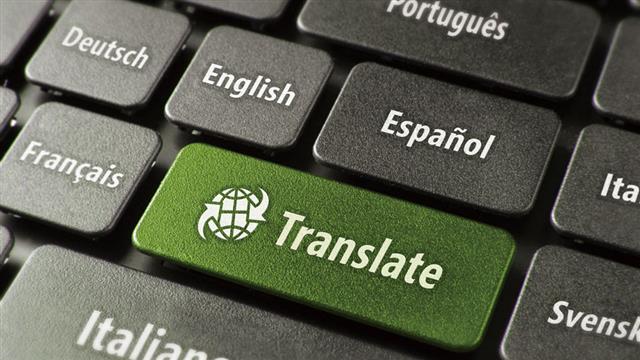According to the Book of Genesis of the Bible, the people of Babel wanted to build a tower tall enough to reach the heavens. At the time there was only one language on earth. The Lord thought that if people could complete the tower, they would be able to do anything they liked. So he confused their language and they could not understand each other. Finally they failed to complete the tower. The word 'babel' was coined and it's come to mean the sound of many voices talking at the same time. To communicate, they would need to rely on translation.
Prof. Chan Sin-wai, chairman of the Department of Translation, is writing a book on translation technology tentatively named Towards a World Without Babel. He observed that there are more than 6,900 languages in the world and in the European Union alone, a total of 23 official languages are used and 2,500 translators are employed. In the United Nations, six official languages are spoken. Translation works are mainly outsourced to professional agencies or freelance translators. The workload will be enormous if interpretation works are also taken into account. Professor Chan said, 'It is very difficult to cope with the amount of rendering work if we rely solely on manpower. But advances in computer technology have offered solutions to the problems.'
What Professor Chan was referring to is computer-aided translation (CAT). He said that many people confuse computer translation with CAT. They are two totally different concepts. 'Computer translation is an automatic process. When you input the source text, the system will process on its own. In CAT, human-computer interaction is involved. As there is a human element, the final product is comparable to human translation. There is still much room for improvement in computer translation. Poor translations by machine were widely read and become jokes. People are under the impression that computer translation cannot produce quality work, and that extends—wrongly so—to CAT,' he explained.
Professor Chan added that research on machine translation began in the 1960s. Scientists strove to develop an automatic translation system. But in the 1980s they realized that CAT was more practical and hence shifted their focus to this area. The CAT system was first introduced in 1988 in Germany.
With technological advances, CAT is now a full-fledged system. It can perform very well especially when working with languages in the same family such as Indo-European languages. It came as no surprise to learn that as the relevant research originated in Europe. In recent years, however, rapid development in this area has taken place in Japan, Korea and China. Now, over 80 sets of CAT software are in common use.
Professor Chan remarked, 'Rendering with the aid of the computer is a global trend. In Europe, 160,000 people use different kinds of systems to assist in translation. In the European Union, over 60% of documents are translated this way. You can imagine how many translators and editors would be needed to render a text of several thousand or even tens of thousands of words within a short time.'
To conclude, CAT makes use of the characteristics of a database and stores in its memory language segments which have previously been translated. When the system encounters the same or similar structures, it will show the previous translation and the translator can adapt it or fine-tune it. This is an inevitable process of human-computer interaction which helps to avoid direct and inaccurate translation.
Prior to the translation process, all the needed phrases and technical terms must be input into the system. Better results would be obtained if more terms are available in the database. In this sense, CAT is more suitable for translation in specific domains such as business documents characterized by jargons and repetition in content.
In fact, most documents needing translation are practical texts. For translation in non-practical domains, Professor Chan said, 'The computer is only a supplementary tool. An excellent translator is still crucial. Computers don't work in the translation of literature.' Timothy Hunt, CEO of TermSeek Inc., said it well, 'Computers will never replace translators, but translators who use computers will replace translators who don't.'
Professor Chan claimed that owing to the specific background of Hong Kong, there is a huge demand for translators. Among the eight local universities, seven offer translation courses. CUHK is the first university in the world to provide a master programme in CAT. This year the programme celebrates its 11th anniversary. Professor Chan said, 'Chinese-English translation has had a long history in Hong Kong and the standard is very high. The government has a rich record and if this information was combed and used to build an extensive CAT database, it would help Hong Kong become one of the world's leading centres in Chinese and English translation.'



